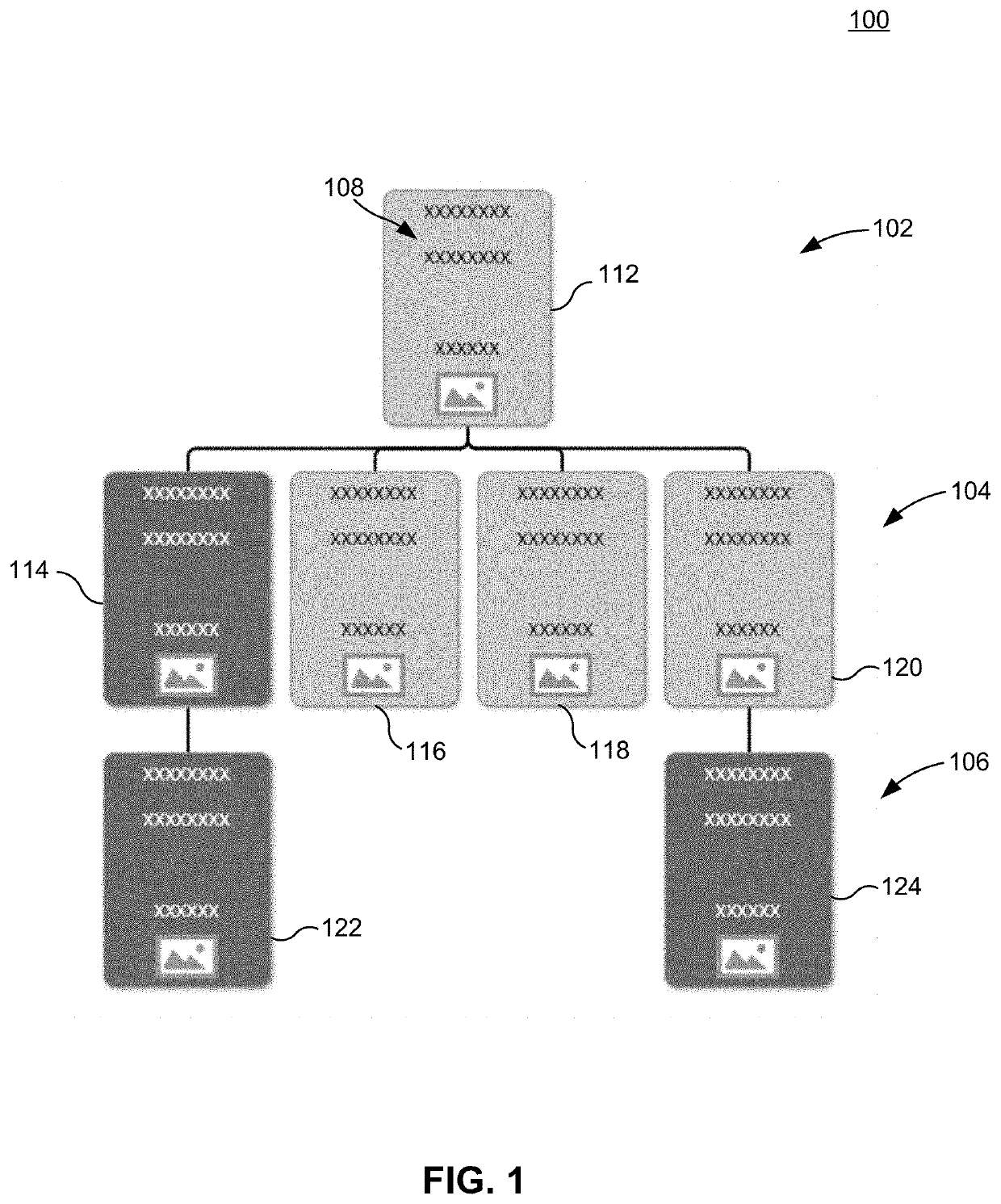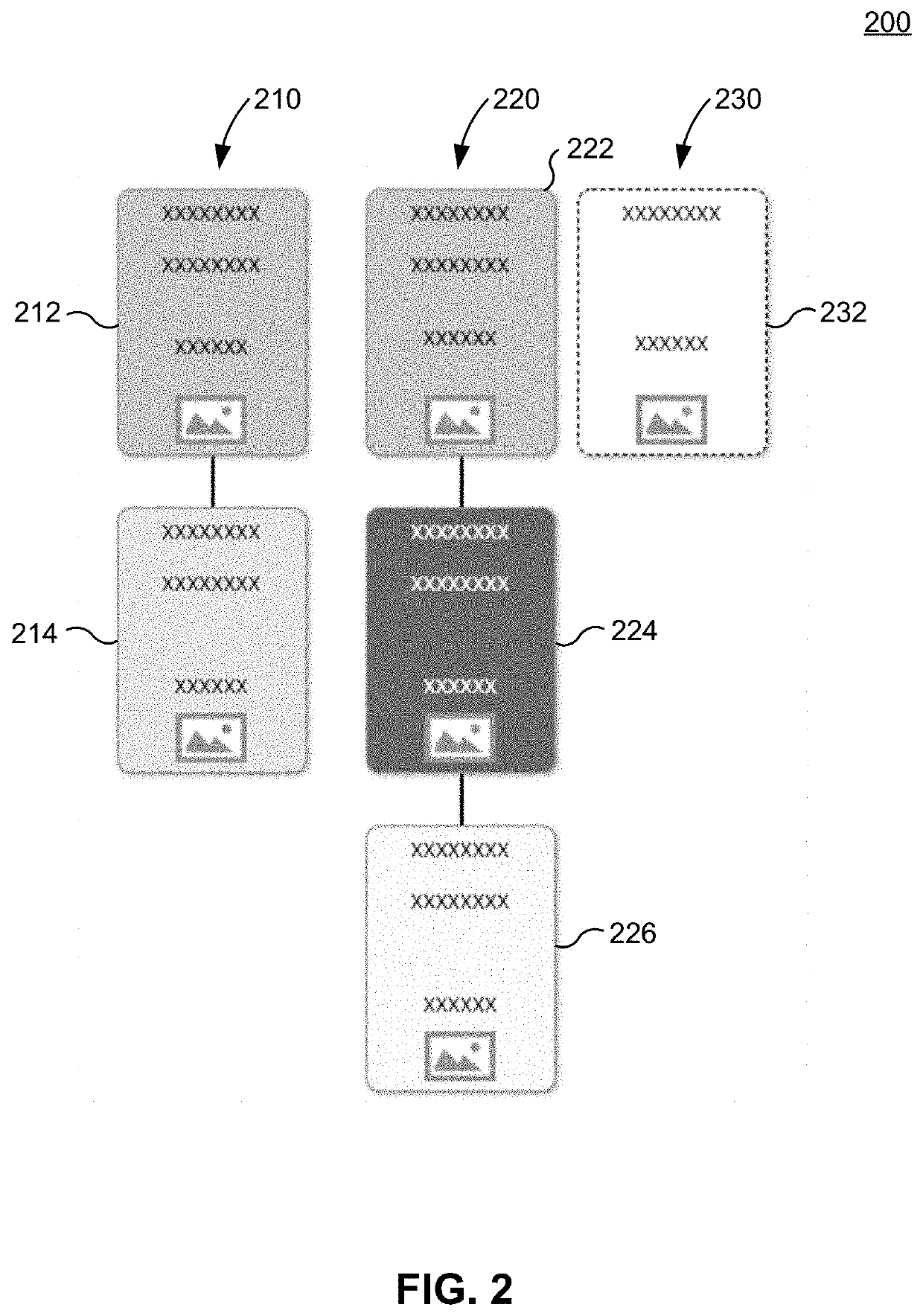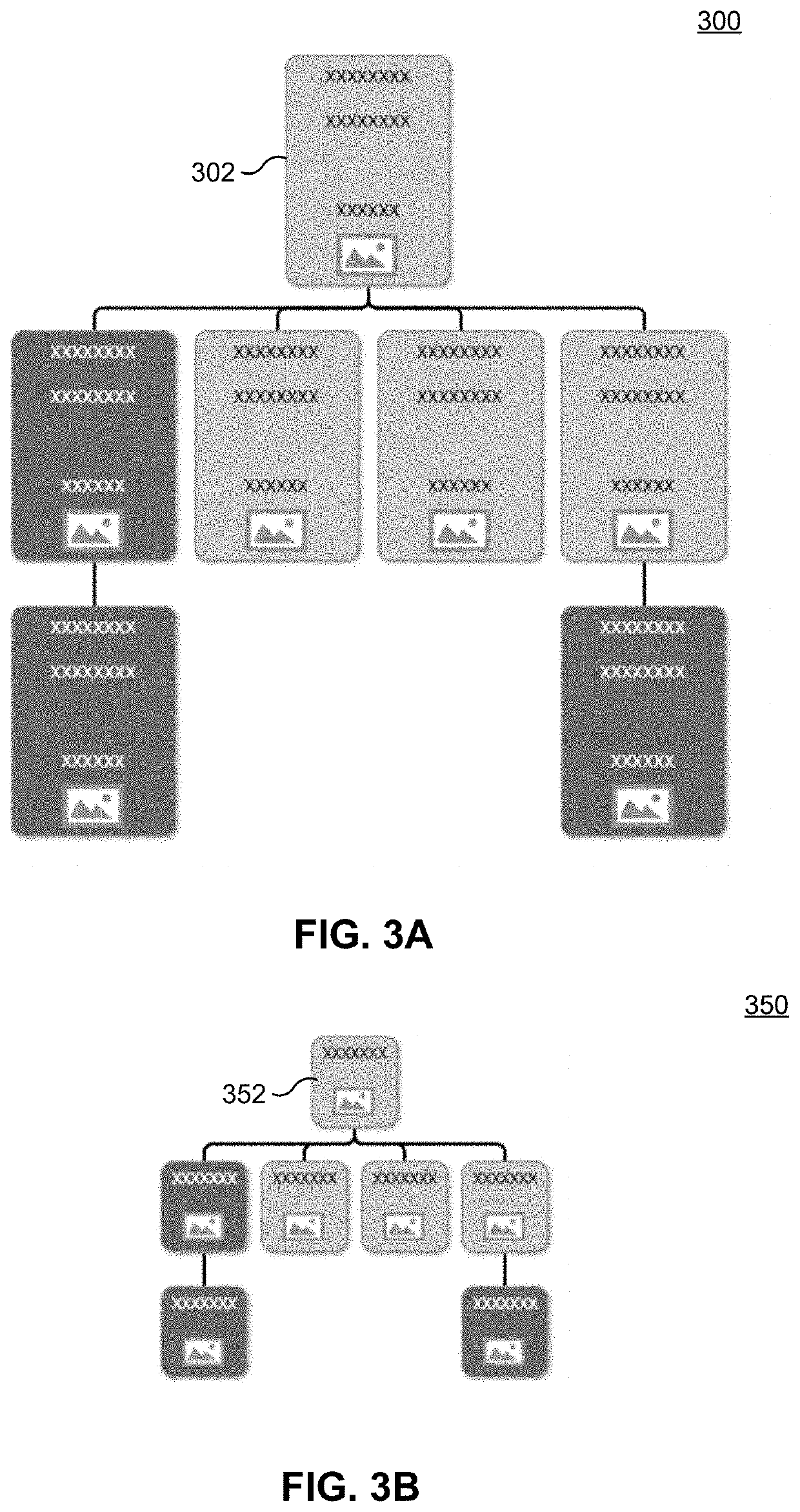Identifying missing nodes within a graphically represented family
a family and node technology, applied in the field of missing nodes within a graphically represented family, can solve the problems of combining them, affecting the design of the tree, and containing irregularities in the tree,
- Summary
- Abstract
- Description
- Claims
- Application Information
AI Technical Summary
Benefits of technology
Problems solved by technology
Method used
Image
Examples
Embodiment Construction
[0020]Embodiments provide methods and systems for generating graphical representation(s) of a plurality of hierarchical records. An exemplary graphical representation (also referred as “a tree” or “a graphical tree”) includes at least one parent, and hierarchical connections from the parent to its children. A given node in the graphical tree (e.g. a given record among the plurality of hierarchical records) may have more than one parent. There is no restriction on the number of children each node may have, as there is no restriction on the number of parents a given node may have. That is, a given node can have m parents (where m is 0 or more), and each node can have n children (where n is 0 or more). According to various embodiments, if a node has exactly one child, the child may be positioned directly below its parent node on a target output medium (e.g. a digital display, a paper).
[0021]In some embodiments, a record with missing information may be identified and graphically illustr...
PUM
 Login to View More
Login to View More Abstract
Description
Claims
Application Information
 Login to View More
Login to View More - R&D
- Intellectual Property
- Life Sciences
- Materials
- Tech Scout
- Unparalleled Data Quality
- Higher Quality Content
- 60% Fewer Hallucinations
Browse by: Latest US Patents, China's latest patents, Technical Efficacy Thesaurus, Application Domain, Technology Topic, Popular Technical Reports.
© 2025 PatSnap. All rights reserved.Legal|Privacy policy|Modern Slavery Act Transparency Statement|Sitemap|About US| Contact US: help@patsnap.com



